Sunday, July 25th 4pm
It's hot. Gloriously hot. The last of a run of unbroken blue summer days that people will remember for ages. The streets and many beaches of Ballybunion, in Co Kerry, are crowded. Kerry are playing Cork in the Munster football final, and green and gold jerseys are in evidence everywhere.
I’m walking around the town, getting my bearings. There are the famous beaches with their tawny sands, the dramatic cliff walk, the views across to Clare. The town has a true abundance of fabulous natural amenities.
Main Street is Ballybunion’s artery, dominated by the 1960s-style five-storey hotel that closed in 2016, with a loss of 80 jobs. It was originally called the Ambassador, but at some point the name changed to the Golf Hotel, presumably to reflect the tourism generated by the famous local golf links. Back in high season in 1985, it cost £70 for a double room with breakfast and dinner for two. That’s the equivalent of €145 today.
The 98-room hotel went for auction for a second time at the end of June, requiring “total refurbishment”, according to the auctioneer’s listing. At the first auction, the reserve price was €850,000. At the second auction, run by Bidx1, it was €650,000. It failed to sell either time. Having been vacant for five years, it is now understandably looking quite shabby.
There are several other smaller vacant and derelict properties on Main Street, which collectively give the street a neglected look. However, I am to discover that the Golf Hotel is the one building everyone mentions during this visit. Despite attempts to contact the owner for an update, it's not clear what the plan is for the shuttered hotel.
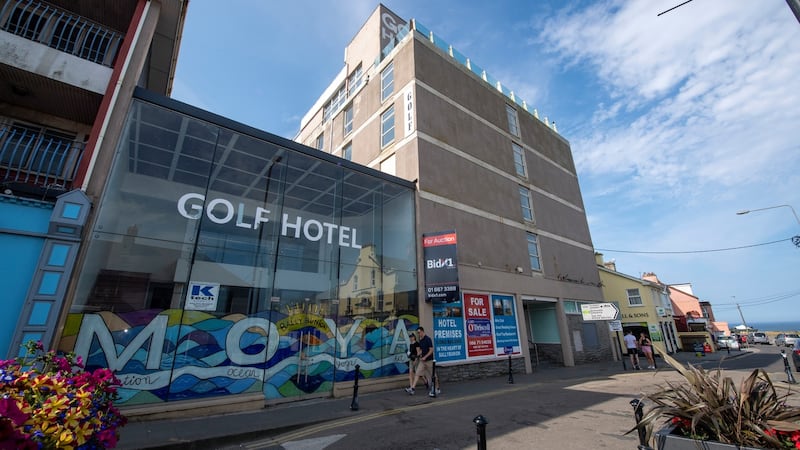
5pm
The garden at the front of McMunn’s bar and restaurant is full, with most tables under gazebos. There is a large screen in the scenic garden, which is being watched by a wider audience than those in the garden itself: several people are hanging over the wall, avidly and loudly following the match.
By the time I walk out to meet Con McCarthy at Ballybunion Golf Club, the match is over. "We annihilated them," he announces with satisfaction, as we take a seat on the upstairs terrace. I am momentarily distracted by the astonishingly beautiful view of the shimmering ocean beyond the undulating pale green of the links.
A joining fee to the club is several thousand euro, and annual membership fees are €700, depending on your age and locality, although I’m told capacity is filled at present. McCarthy himself has been a member for 35 years. A green fee to play one round on the old links is usually €250, but this has dropped to €150 for a round on both courses while the usually lucrative North American market remains absent.
McCarthy is now retired, but he worked in hospitality in the town for many years. He ran the Marine Hotel for a time, and then the now infamous Golf Hotel. "Ballybunion has always been busy during the summer and dead in winter. We have tried various ways to lengthen the season, and to get golfers in, but the weather takes over. Ballybunion hasn't moved on as it should."
McCarthy observes that the town has traditionally depended on repeat generational business, where the same families return annually for a fortnight or a summer. It still nurtures this repeat business, but seems to be failing to build new tourist bases.
“We need a big hotel,” he says, mentioning the gap left by the 98-room Golf Hotel, which was by far the largest hotel in the town. “And there’s no destination restaurant here that would bring people in from, say, Newcastle West.”
7.30pm
I go for a walk on Ladies Beach. There are still about 40 swimmers in the calm ocean. There is also, despite the prominent presence of several huge bins on the beach – most not full, because I take the time to look into some of them – a depressingly large amount of rubbish left scattered all over the beach. Plastic water bottles, plastic straws, cigarette butts, plastic cups, plastic sweet wrappers.
Yes, it’s been an exceptionally busy day at the beach, but are people really so lazy or thoughtless about their gorgeous environment, and of the others sharing this amenity, that they can’t walk a few metres to a bin to deposit their rubbish before leaving?
Monday, July 26th 6.45am
I’m back at Ladies Beach to meet up with an ad-hoc group of friends who meet at this time year-round to swim. “We started swimming at the beginning of lockdown, and we’ve kept at it since,” Cathy Sadlier says. “Being in the sea made me feel like I wasn’t locked in. We’ve laughed and we’ve cried in the water, and when we get out, we’ve left our troubles behind us there. We’ve shared our souls in that water.”
One by one the others arrive. Fiona McLoughlin, Dee Keogh, Bridget McCarthy, Helen McSweeney – who, along with her swimsuit, is also wearing pink lipstick and pearl earrings. That’s serious glamour for 7am on an Irish beach. As for McCarthy, it turns out that she has made all the striking towelling robes the women habitually wear before and after swimming; one of which proclaims “Seas the Day”. The next thing I know, I’m being presented with one too; in turquoise.
Listening to the pre-swim chat, it's clear from the women's easy friendship, and their stories, that this regular swim helped them through the challenging months of the pandemic. Flasks of coffee are produced, and delicious home-made sausage rolls (still warm), also made by McCarthy. I wonder how many more ad-hoc swimming communities like this one were created all over coastal Ireland these past 18 months.
The water is pleasurably warm; a rare experience in the Irish Atlantic. We swim, and laugh, and get dunked by the waves, and then get a bit freaked out – or I do, at least – by the number of jellyfish sharing the tepid water with us. The increase in temperature has brought these jellyfish inwards, and I am not as stoic about their busy presence as the rest of the group. Reluctantly, I get out, sooner than I would have liked.
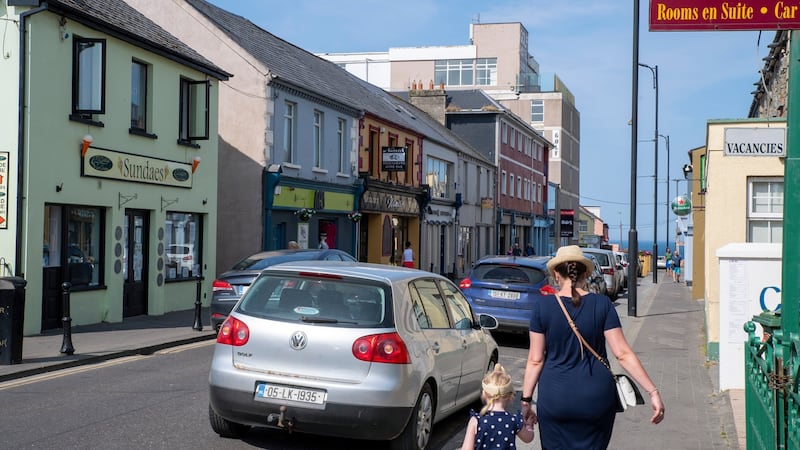
11.30am
The Cliff House Hotel is a lovely 45-bed hotel in an enviable elevated location, with glorious views over the ocean and cliffs. A double with a sea view right now is €160 per room, and there was 75 per cent occupancy the night before.
Kevin O’Callaghan is its courteous, welcoming owner, and also the chairman of the Ballybunion Development Company (BDC). We sit down for a coffee, and he puts on his BDC hat and gives me a glowing analysis of the twon. In short: Ballybunion is fantastic, the amenities are fantastic, the community is fantastic, and so too is business. He’s clearly both very proud of, and very loyal to, his home town.
At one point O’Callaghan tells me the town has “made a comeback” and then corrects himself, when I ask what it has come back from. Apparently no “comeback” was necessary, because in his view, Ballybunion continues to be the unchanged, popular and much-loved seaside resort town loved both by the generations of Irish tourists who have always come here, and the additional golf tourists.
“We need the Golf Hotel to open in some form though,” he says. “All that accommodation is missing out of the town every night.
'I would like to see people coming back to live on the street and rejuvenate the town. People in businesses are dying out, and nobody is replacing them'
1pm
I’m staying in Kilcooly’s Country House, which has been in John O’Connor’s family since the 1960s. He runs the 19-bed hotel with his wife, Joan. Last night, all but two rooms were occupied.
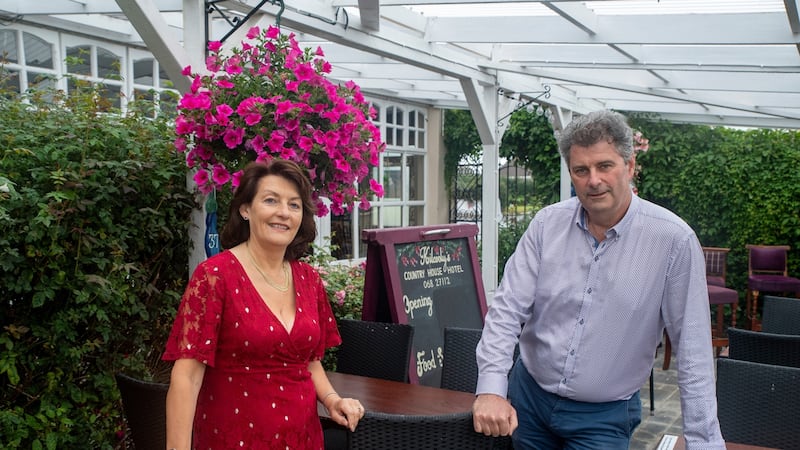
They live beside the hotel, which is on Main Street. “When our kids were small, it was just us and one other family living in the middle of town.” Joan says. “There are a lot of vacant premises on this street. I would like to see people coming back to live on the street and rejuvenate the town. People in businesses are dying out, and nobody is replacing them.”
They have seen many premises on Main Street close in recent time, and list them off. A cafe. An electrical shop. A drapers. “Main Street has become a bit of a disaster,” John says bluntly. “All seaside towns in Ireland have struggled. The various tax break sections for seaside towns in the resort renewal scheme: they made a dog’s dinner of it. Those towns, including ours, were not developed the way that people who lived there envisaged.”
O’Connor is talking about the 1995 seaside resorts renewal scheme, which was intended to support 14 seaside towns by providing tax breaks for development there. What mostly happened instead was the construction of many holiday homes, which did not assist with long-term development.
“What was built from that scheme were only holiday homes. Ballybunion has struggled. We can’t make progress without development. We are waiting now to see what happens with the Golf Hotel.”
2.15pm
Today is the day when indoor hospitality is finally allowed to reopen throughout the State. I’m at McMunn’s restaurant to talk to owners Una O’Connor and Greg Ryan, who have had the place for 17 years. They don’t open on Mondays, but they won’t be reopening any time soon for indoor dining.
“We have decided to stick with outdoor dining until the end of summer,” Ryan says. Their decision is down to staffing problems. Usually, they have 33 people. “We have half that now.” In previous years, they had sourced several staff members from catering colleges in Spain and Hungary, but that has stopped for now. “Agency fees for a chef are €29 an hour, plus VAT, and you have to guarantee an eight-hour shift per day. And we still can’t get staff.”
The previous night, I’d had an excellent seafood platter there, but in the middle of explaining where they source their produce, Ryan suddenly says: “We need to talk about the elephant in the room. The Golf Hotel. We all want it sold.”
He also talks about what he perceives as “property hoarding” in the town. “Businesses close, but the families hang on to the properties and don’t sell, so another business can’t open.”
3.30pm
It’s pouring rain, and I’m queuing at Coast Cafe, waiting to sit inside, vaccination cert in my hand. There is a lot of back and forth, and then I’m seated. I’m meeting Daniel Enright here.
The previous evening, I’d noticed Grub, a takeaway place with a strikingly inventive menu. Seafood chowder croquettes with beach foraged seaweed salad for €8. Duck salad nicoise for €10. Surf and Turf – crispy pork belly, chorizo jam, Atlantic prawns and chilli spuds for €18. All of it very different from the usual takeaway offerings.
“It’s posh takeaway,” says Enright, Grub’s chef. “I just couldn’t do the flipping burgers thing. I use all local seafood and forage for samphire, sea beets and herbs.”
Pre-Covid-19, Enright had his own fine-dining agency, and worked on weddings at many of the country’s top-end hotels. “I had 67 weddings booked for last year and they all went.” He returned to his home town and opened up Grub. “I did grand, but indoor dining will kill me now. It’s time to go back to hotel work.”
I ask how he has seen Ballybunion change over time. “It is still the same, but I don’t think that is a bad thing. I prefer it in the winter: two-thirds of the town is empty out of season. It needs more accommodation, though. The Golf Hotel is a horrible building. It would be great if the council bought it.”
4.15pm
The population of Ballybunion in the 2016 census was recorded as 1,854. There are approximately 1,000 mobile homes in six different parks in and around the town. There are also three amusement arcades, which remain closed due to Government regulations. Their names hint at their past histories: the Ballerina, the Pavilion. The arcades were formerly ballrooms that attracted huge crowds during the showband era.
“During the summer, right through until the 1980s, there used to be between 7,000 and 10,000 dancing in Ballybunion every weekend,” Jackie Hourigan tells me. “There were five women for every man. People came from all over Ireland.”
We’re talking in his elegant guesthouse, Harty Costello on Main Street, which also has a restaurant and bar. Hourigan won’t be opening either of them just yet: he wants to wait and see.
Tourism is still a thing, but it is a very short season
Hourigan witnessed the era when 10,000 dancers regularly came to the town. What does he make of tourism in the town now?
"It's a disaster. The Central Hotel is gone, the Castle Hotel is gone, The Golf Hotel is gone. Tourism is still a thing, but it is a very short season. The golfers help extend it, but the big thing that extends the season is sunshine."
5.15pm
Collins’s Seaweed Baths on Ladies Beach has long been famous. Clare Mulvihill’s great-grandmother started them. Mulvihill is a history and geography teacher, but she runs the baths in the summer. “My dad and my brother collect the seaweed,” she says.
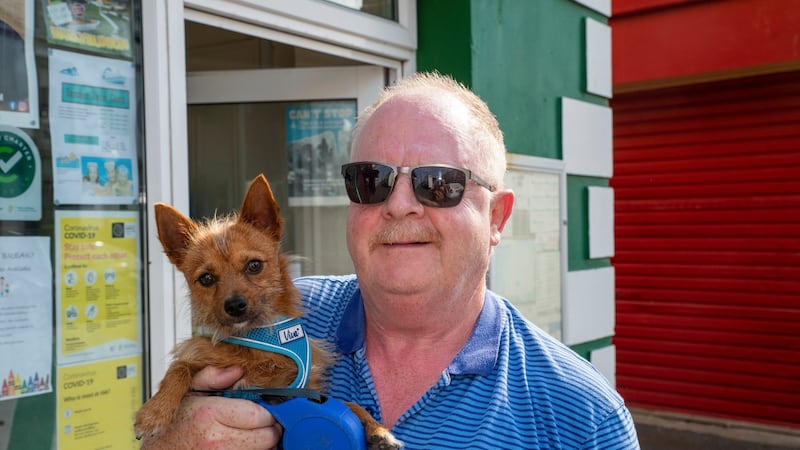
Mulvihill grew up here. “The same clientele keep coming back every summer,” she says. “Third and fourth generations of families.”
I mention the currently derelict buildings on Main Street, and ask what she thinks the future of Ballybunion is.
“I don’t know. I’ve never thought about it,” she says. “Maybe if the Golf Hotel was revamped, that would help.”
There are five atmospheric baths at Collins’s, and one of them is meant for me. It turns out that payment is cash only, which I don’t have on me, so we make an arrangement that I’ll put the €25 under the door later that evening.
The hot seaweed bath with its moisturising oils is so glorious I wish I could have one every day. I more or less glide out of the place.
Ballybunion is a conundrum. During the time I spend there, I hear puzzlingly diverse accounts of its prosperity from its residents. It’s clear the community itself is divided on how they perceive their town. Those who have less than positive things to say mostly do not want to go on the record.
It’s complicated. You can have genuine pride in the people of the community you live among, while also failing to acknowledge the problems associated with its built environment, or the implications for the future social and economic fabric of the town.
'Ballybunion is stuck in a tourism model of the past, and has stagnated'
Before leaving Ballybunion, I make a phone call to Clare Mulvihill, to ensure she has received the cash I had stuck under the door of the seaweed baths. She has. On the call, Mulvihill has more to add to our previous day’s interview.
“I was thinking about what you asked yesterday; about what do I think the future of the town is,” she says. “The thing is, I don’t see derelict buildings at all. Derelict buildings are just temporary. I only see a great community here and a brilliant place to live.”
Her final words to me are: “Ballybunion is flying!”
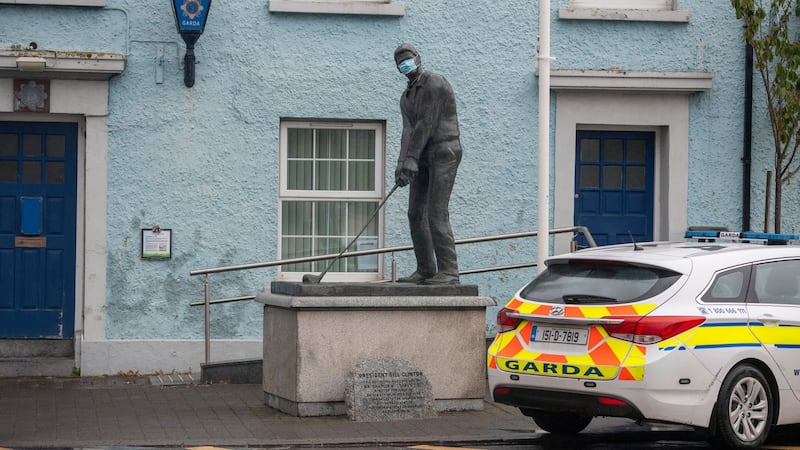
These are other comments people made during my time in the town:
“Ballybunion is the friendliest town in Ireland.”
“Ballybunion is stuck in a tourism model of the past, and has stagnated.”
“Ballybunion is fantastic.”
“Ballybunion’s lack of new development is a disaster.”
If some of these statements are true, then it means some of the others can’t be. What is the real truth? Only Ballybunion’s population, who are clearly united in loving the community where they live, can figure that out.

















